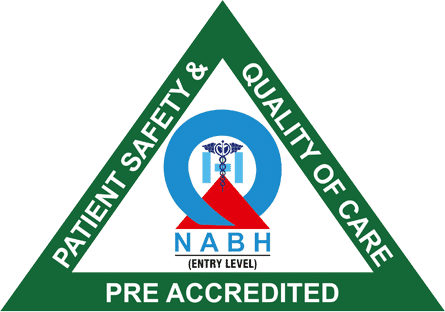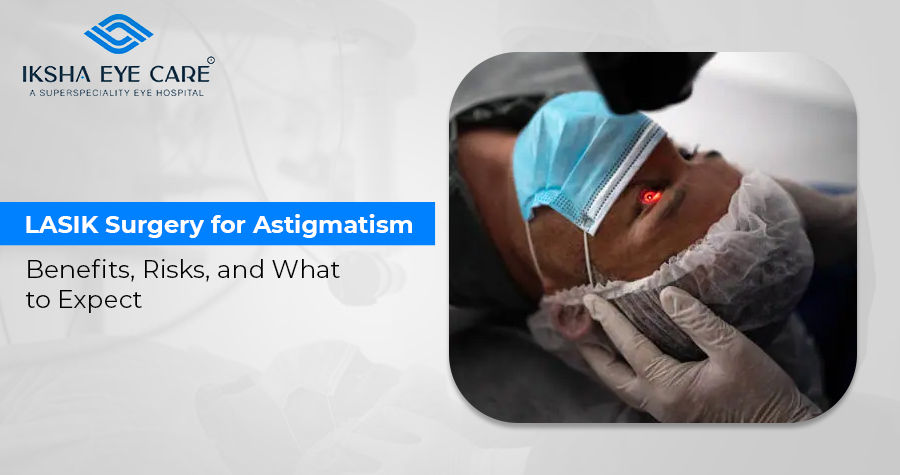Astigmatism can make daily activities like reading, driving, and even recognizing faces challenging. If you’re tired of relying on glasses or contact lenses, LASIK eye surgery could be the life-changing solution you’re looking for. But is it right for you? In this comprehensive guide, we’ll discuss the benefits of LASIK for astigmatism, potential LASIK surgery risks, and what to expect before, during, and after the procedure.
Understanding Astigmatism
Astigmatism occurs when the cornea or lens is irregularly shaped, causing blurred or distorted vision at all distances. Unlike nearsightedness (myopia) or farsightedness (hyperopia), astigmatism affects both near and far vision. LASIK for astigmatism works by reshaping the cornea with a laser, allowing light to focus properly on the retina, resulting in clearer vision.
What is LASIK Eye Surgery?
LASIK eye surgery (Laser-Assisted in Situ Keratomileusis) is a popular vision correction procedure that reshapes the cornea to improve how light enters the eye. It’s a quick, minimally invasive surgery with a high success rate. Many patients achieve 20/20 vision or better following the procedure.
Benefits of LASIK for Astigmatism
If you have astigmatism, you may wonder why LASIK eye surgery is a great option. Here are some key LASIK surgery benefits:
- Permanent Vision Correction – Unlike glasses or contacts, LASIK provides long-lasting results.
- Fast Recovery – Most patients resume normal activities within 24 to 48 hours.
- Improved Quality of Life – No more dependency on corrective lenses.
- Enhanced Night Vision – Many patients notice a reduction in glare and halos at night.
- Cost Savings – Over time, LASIK can be more cost-effective than purchasing glasses and contact lenses.
How Does LASIK for Astigmatism Work?
The LASIK procedure involves three key steps:
- Creating a Corneal Flap – A small flap is made on the cornea using a femtosecond laser.
- Reshaping the Cornea – An excimer laser reshapes the cornea to correct astigmatism.
- Healing and Recovery – The flap is repositioned, and the eye begins to heal naturally.
LASIK Surgery Risks and Side Effects
While LASIK eye surgery is considered safe, it’s important to be aware of potential LASIK surgery risks and LASIK surgery side effects:
- Dry Eyes – Temporary dryness is common but usually resolves in a few months.
- Halos and Glare – Some patients experience halos or glare, especially at night.
- Under or Overcorrection – In rare cases, additional procedures may be needed.
- Flap Complications – Issues with the corneal flap are possible but rare.
LASIK for Astigmatism Recovery: What to Expect
Recovery is typically quick, but here’s what you should expect:
- First 24 Hours: Some discomfort and blurry vision, but vision improves rapidly.
- One Week: Most daily activities can be resumed.
- One Month: Vision stabilizes, with most side effects disappearing.
- Three to Six Months: Full healing and optimal results are achieved.
How Do You Choose an Eye Surgeon?
Choosing the best LASIK surgeon in Mumbai is crucial for a successful outcome. Here are some factors to consider:
- Experience and Credentials – Look for a surgeon with extensive experience in LASIK eye surgery.
- Technology Used – Ensure they use the latest laser technology.
- Patient Reviews – Check testimonials and success rates.
- Consultation Approach – A good surgeon will evaluate your eyes thoroughly and explain the procedure in detail.
Cost of LASIK Surgery in Mumbai
The cost of LASIK eye surgery varies based on the technology used and the surgeon’s expertise. In Mumbai, prices typically range from ₹30,000 to ₹1,00,000 per eye. Financing options and EMI plans are often available.
Who is a Good Candidate for LASIK?
You may be a good candidate for LASIK eye surgery if you:
- Are at least 18 years old.
- Have stable vision for at least a year.
- Have mild to moderate astigmatism.
- Do not have severe dry eyes or other eye conditions.
Conclusion
LASIK for astigmatism offers a life-changing opportunity to enjoy clear vision without glasses or contacts. While there are some LASIK surgery risks, advancements in technology have made it safer than ever. If you’re considering the procedure, consult with the best LASIK surgeon in Mumbai to determine if you’re a suitable candidate. A clear, glasses-free future might be just one procedure away!
Frequently Asked Questions (FAQs)
1. Is LASIK surgery painful?
No, LASIK is not painful. Numbing drops are used, and most patients feel only slight pressure during the procedure.
2. How long does the LASIK procedure take?
The surgery itself takes about 15 minutes for both eyes, but expect to be at the clinic for about 1-2 hours for preparation and post-procedure care.
3. How soon can I return to work after LASIK?
Most patients can return to work within 24 to 48 hours, but it’s best to follow your surgeon’s advice.
4. Can LASIK correct severe astigmatism?
Yes, LASIK can correct mild to moderate astigmatism. However, for severe cases, other procedures may be recommended.
5. Is LASIK permanent?
Yes, the vision correction from LASIK is permanent. However, natural aging of the eyes may still lead to vision changes over time.
If you’re considering LASIK eye surgery, take the next step and schedule a consultation with the best LASIK surgeon in Mumbai today!















